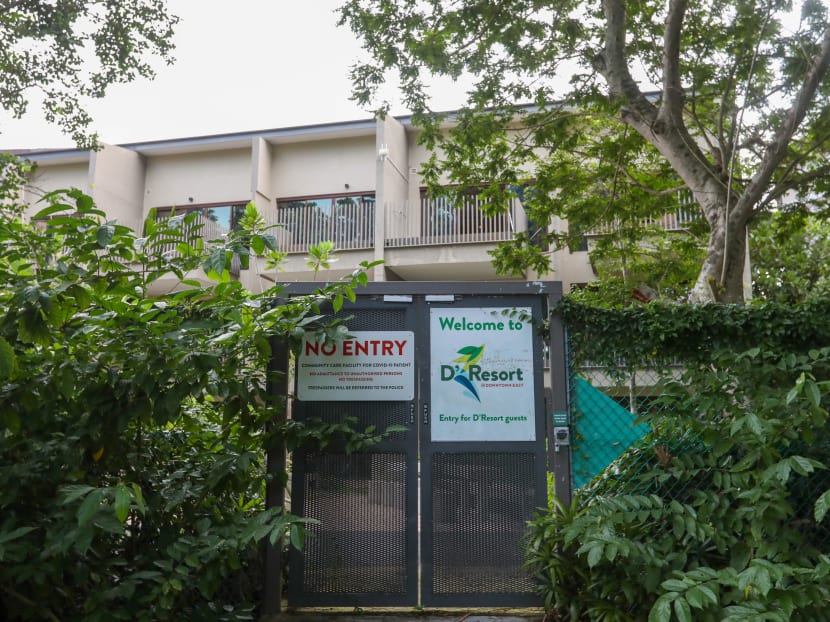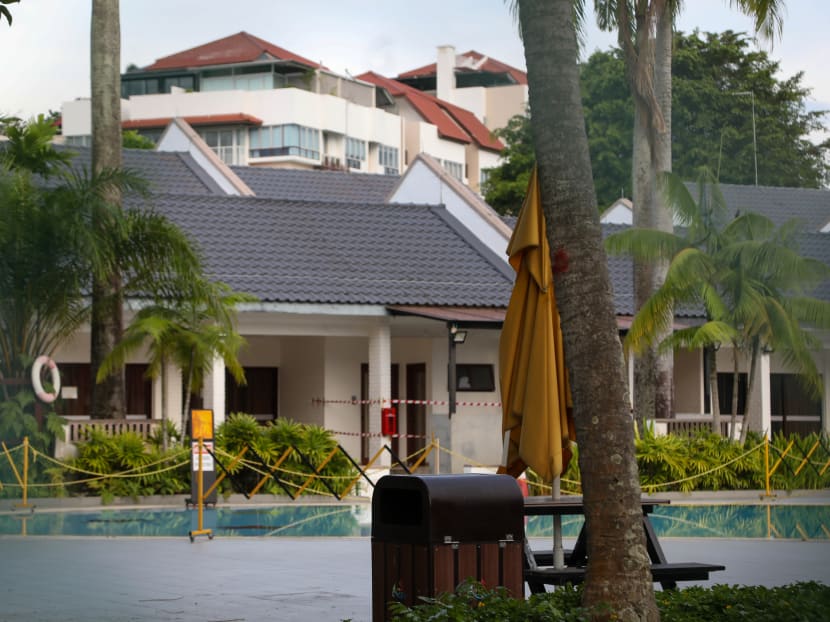3 community care facilities more than 10% full, 2 more on standby in case Covid-19 numbers surge
SINGAPORE — With the number of Covid-19 cases not showing consistent signs of subsiding, Singapore has reached around 12 per cent of its present ability to house people in dedicated community care facilities as of Wednesday (May 26).

Community care facilities such as D’Resort NTUC (pictured) are set up to isolate those who have tested positive for the coronavirus, have only mild symptoms and do not require extensive treatment.
- There are 3 community care facilities now housing up to 2,400 Covid-19 patients
- They are D’Resort NTUC, Tuas South and Bright Vision Hospital
- As of May 26, there were 282 people placed in isolation
- This is around 12 per cent of the bed capacity at the facilities
- Another two facilities are ready to house patients if cases spike
SINGAPORE — With the number of Covid-19 cases not showing consistent signs of subsiding, Singapore has reached around 12 per cent of its present ability to house people in dedicated community care facilities as of Wednesday (May 26).
There are now 2,400 bed spaces in three facilities, namely D’Resort NTUC, Tuas South and Bright Vision Hospital, the Ministry of Health (MOH) said in response to TODAY’s queries.
These dedicated facilities are meant to isolate those who have tested positive for the coronavirus and have only mild symptoms and do not require extensive treatment.
Should there be a need to boost capacity for people who need to be isolated, MOH has prepared two more community care facilities at the former site of the Ang Mo Kio Institute of Technical Education (ITE) and the Civil Service Club at Loyang “as an added buffer for contingencies”.
Both sites had been designated as community care facilities in the past — the ITE site was fitted with partitions and beds before June last year when there were growing clusters of Covid-19 within workers’ dormitories then.
“The addition of these community care facilities means we can take in about 4,100 individuals in total,” MOH said.
TODAY has sought clarification from MOH on whether the facilities at Ang Mo Kio ITE and the Civil Service Club at Loyang were put on standby recently as a result of the increase in cases arising from variant strains making their rounds here in the past month.
As of Wednesday (May 26), there were 282 people placed under isolation, MOH’s website stated. They include those who are from the community and in workers’ dormitories, as well as imported cases who have been serving their quarantine periods in dedicated facilities.
The statistics for those in isolation do not include patients who are warded in hospitals and require greater medical attention, unlike those in the community care facilities.

With mutant strains such as the infectious B1617 variant now spreading here, the number of people in community care facilities have also increased since March, when there were fewer than 100 people in isolation.
MOH said: “Each community care facility has been designed and built to facilitate rapid scaling up and down depending on the needs and local situation.
“We will continue to review the local situation and requirements, and adjust the community care facilities’ capacity accordingly.”
For patients isolated in hospital wards, there were 242 of them as of May 26, including two in critical condition. The rest are in a stable condition.
The National Centre for Infectious Diseases, where most Covid-19 patients are warded, has 17 wards with a bed capacity of 330. This can be increased to 500 during an outbreak, based on past reports.
Other public hospitals are also able to house Covid-19 patients safely in negative pressure rooms or isolation wards, as the experience last year showed.
For example, the Singapore General Hospital said last September that it was able to convert wards, intensive care units and operating theatres into negative pressure isolation rooms within hours to house patients with infectious diseases.
As of May 26, around 58,000 people have completed their isolation and another 3,407 Covid-19 patients have been discharged from hospital wards since the start of the pandemic.
A total of 32 people have died from the disease so far.








